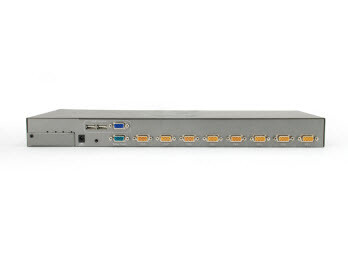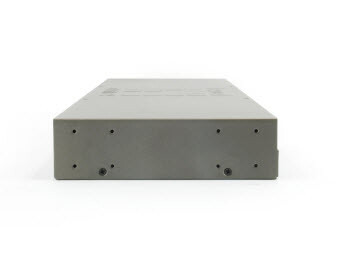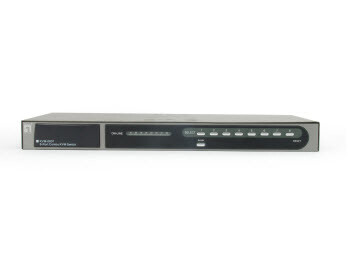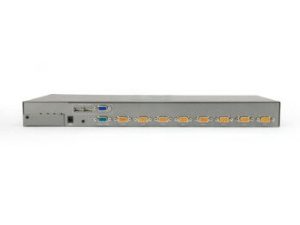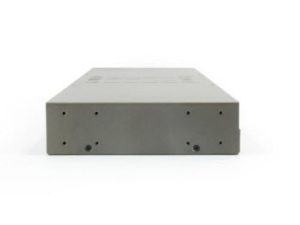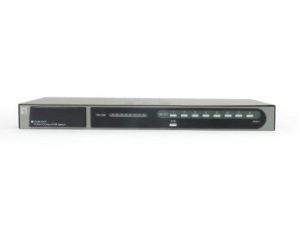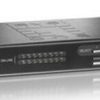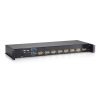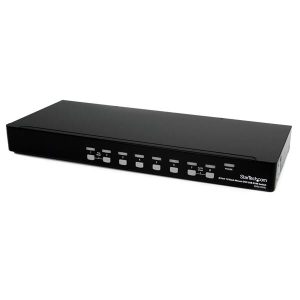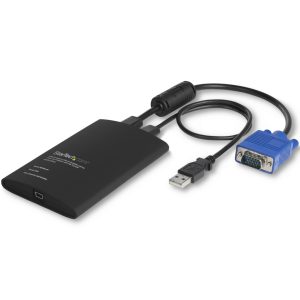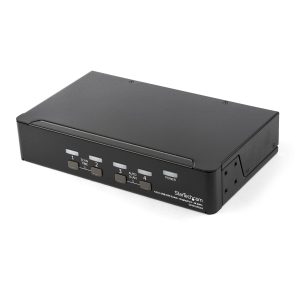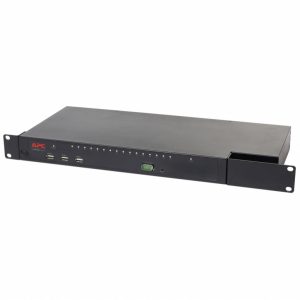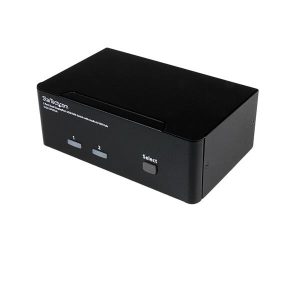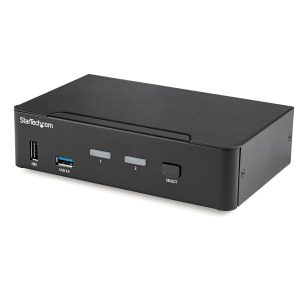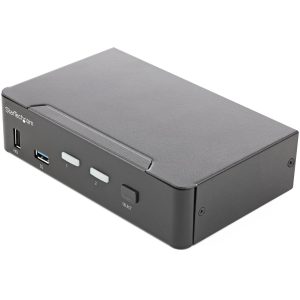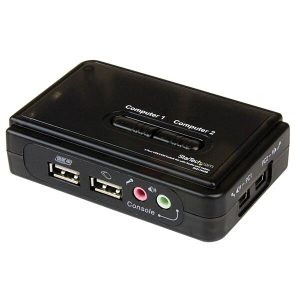LevelOne KVM-0831 KVM Switch Stativ-montering Sort, Grå
3.562,50 kr. inkl. moms (ex. moms 2.850,00 kr.)
8-Port PS/2-USB VGA KVM
Ikke på lager
Giv mig besked når varen kan købes

The LevelOne KVM-0831 8-port combo KVM switch enables users to control and manage a server farm or computers connected to the KVM switch with either the local console or remote console port.
Local Console
The KVM-0831 Combo KVM Switch is easy to connect to a PS/2 or USB enabled keyboard and mouse with a VGA monitor through the local console port. This enables a user to control systems connected to the KVM switch directly.
Remote Console
In order to make use of the remote control feature, the KVM-0831 provides users with a greater variety of connectivity options through its expansion slot for optional modules.
LevelOne has available an optional Cat.5 Console Module for this purpose. The ACC-1000 Cat.5 Console Module allows for the transmission of a Cat.5 signal to from the controlling unit to units or computers connected to via Cat.5 cabling to the KVM-0831. The ACC-1000 Cat.5 Module converts the Cat.5 signal into a computer signal to give users the ability to control servers and PCs from a
remote location up to 300 meters away.
Large System Management
By making use of a Daisy chain, up to 120 computers can be connected to the KVM switch by cascading 8 KVM-0830/0831/0841/1630/1631/1641 together. This gives network administrator the ability to control larger groups of servers or systems from one console without the need to switching between different console stations.
The friendly user interface makes management of the KVM switch and systems connected to it, easy manageable. It also has security measures in place to protect systems from unauthorized access.
– Control servers and computers either locally via control port or remotely via optional modules through the module expansion slot
– Features an expansion slot for flexible installation with optional module choices
– Flexible auto-scan mode for flexible PC monitoring
– Built-in daisy chain port for cascading with KVM-0830/0831 or KVM-1630/1631 up to 8 units
– High video display quality up to 1920×1440
– Support Windows, NetWare, Unix, Linux, Mac OS and Sun Microsystems
| Vægt | 3,0000 kg |
|---|---|
| Antal kontrollerede computere | 8 |
| Brand | LevelOne |
| State | Default |
| Tastatur porttype | USB |
| Mus porttype | USB |
| Video porttype | VGA |
| Konsol porte | USB A, VGA (D-Sub) |
| Antal konsol USB porte | 2 |
| USB-stik type | USB Type-A |
| Lydforbindelse | Ingen |
| Maksimal opløsning | 1920 x 1440 pixel |
| Skanningsinterval | 5,99 sek./side |
| Stativ-montering | Ja |
| Produktfarve | Sort, Grå |
| LED-indikatorer | Ja |
| Trykknap | Ja |
| Genvejstaster | Ja |
| Gennemsnitstid mellem fejl (MTBF) | 75138,181 t |
| Indbygget skærm | Ja |
| Skærmvisning (OSD) | Ja |
| Udgangsspænding | 12 V |
| Udgangsstrøm | 1 A |
| Driftstemperatur (T-T) | 0 – 50 °C |
| Opbevaringstemperatur (T-T) | -20 – 60 °C |
| Relativ luftfugtighed ved drift (H-H) | 0 – 95% |
| Bredde | 160 mm |
| Dybde | 445 mm |
| Højde | 45 mm |
| Pakkebredde | 325 mm |
| Pakkedybde | 550 mm |
| Pakkehøjde | 320 mm |
| Pakkevægt | 9,6 kg |
| Brugervejledning | Ja |
| AC-adapter inkluderet | Ja |
| Gummifødder | Ja |
| Harmoniseret systemkode (HS) | 85176200 |
| Rackkapacitet | 1U |
| Antal VGA-porte (D-sub) | 8 |
| Understøtter hot-plug | Ja |
| Understøttede Windows-operativsystemer | Ja |
| Understøttede Mac-operativsystemer | Ja |
| Rack monteringskit | Ja |
| DC-in-stik | Ja |
| Understøttede Linux-operativsystemer | Ja |
| Maksimal driftstilstand | 300 m |
| Oprindelsesland | Kina |
| Andre understøttede operativsystemer | Novell NetWare 3.x, Novell NetWare 4.x, Novell NetWare 6.x |
| Cascadable | Ja |

